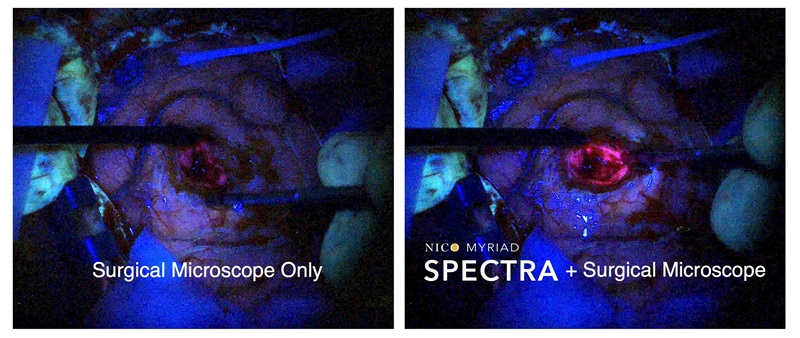Flexible Microdisplay Visualizes Brain Activity in Real-Time To Guide Neurosurgeons
Posted on 26 Apr 2024
During brain surgery, neurosurgeons need to identify and preserve regions responsible for critical functions while removing harmful tissue. Traditionally, neurosurgeons rely on a team of electrophysiologists, positioned elsewhere in the operating room, to monitor brain function. Information about critical and non-critical brain areas is relayed to the surgeon either on paper or verbally, methods that can compromise the efficiency and accuracy of the surgery. Additionally, the electrodes typically used during these surgeries do not provide highly detailed data, creating the need for a resection margin of 5 to 7 millimeters to avoid damaging essential tissue, which may result in some harmful tissue being left behind.
Now, a collaborative research team that included engineers and physicians from the University of California San Diego (La Jolla, CA, USA) has developed a groundbreaking solution: a flexible microdisplay capable of both monitoring and visualizing brain activity in real-time during surgeries. This thin film integrates an electrode grid with LEDs to offer real-time, visual feedback of brain function, significantly enhancing surgical precision. This technology is designed to provide visual information about the brain to monitor the organ’s states during surgical procedures, helping neurosurgeons make informed decisions about which tissues to remove and which to preserve.

In proof-of-concept trials involving rodents and large non-primate mammals, the device successfully tracked and displayed neural activity, with LEDs lighting up red in areas designated for removal and green in regions critical for function. The technology also demonstrated its potential in mapping and visualizing the spread of epileptic seizures, identifying key areas involved in the condition. This capability could lead to targeted treatments, either by surgical removal of tissue or through electrical stimulation.
The research team is now advancing this technology by developing a microdisplay featuring 100,000 LEDs, aiming for a resolution comparable to that of a smartphone screen. This high-density LED array will represent the activity of hundreds of neurons per LED, providing unparalleled clarity and detail. The upcoming version of the microdisplay will also include a foldable section to facilitate surgical access while continuously displaying real-time brain activity, helping surgeons observe the immediate effects of their interventions. This innovation promises to make brain surgery safer and more effective, potentially transforming how neurosurgical procedures are conducted.
“Neurosurgeons could see and stop a seizure before it spreads, view what brain areas are involved in different cognitive processes, and visualize the functional extent of tumor spread. This work will provide a powerful tool for the difficult task of removing a tumor from the most sensitive brain areas,” said Daniel Cleary, one of the team members.
Related Links:
University of California San Diego













.jpg)
